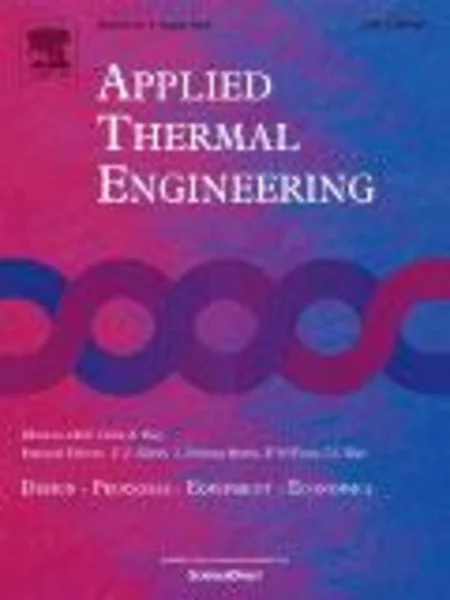-
design for thermal sensation and comfort states in vehicles cabins
جزئیات بیشتر مقاله- تاریخ ارائه: 1392/01/01
- تاریخ انتشار در تی پی بین: 1392/01/01
- تعداد بازدید: 785
- تعداد پرسش و پاسخ ها: 0
- شماره تماس دبیرخانه رویداد: -
this manuscript investigates the analysis and modeling of vehicular thermal comfort parameters using a set of designed experiments aided by thermography measurements. the experiments are conducted using a full size climatic chamber to host the test vehicle, to accurately assess the transient and steady state temperature distributions of the test vehicle cabin. further investigate the thermal sensation (overall and local) and the human comfort states under artificially created relative humidity scenarios. the thermal images are calibrated through a thermocouples network, while the outside temperature and relative humidity are manipulated through the climatic environmental chamber with controlled soaking periods to guarantee the steady state conditions for each test scenario. the relative humidity inside the passenger cabin is controlled using a total humidity controller (thc). the simulation uses the experimentally extracted boundary conditions via a 3-d berkeley model that is set to be fully transient to account for the interactions in the velocity and temperature fields in the passenger compartment, which included interactions from turbulent flow, thermal buoyancy and the three modes of heat transfer conduction, convection and radiation. the model investigates the human comfort by analyzing the effect of the in-cabin relative humidity from two specific perspectives; firstly its effect on the body temporal variation of temperature within the cabin. secondly, the local sensation (ls) and comfort (lc) are analyzed for the different body segments in addition to the overall sensation (os) and the overall comfort (oc). furthermore, the human sensation is computed using the fanger model in terms of the predicted mean value (pmv) and the predicted percentage dissatisfied (ppd) indices. the experimental and simulation results show that controlling the rh levels during the heating and the cooling processes (winter and summer conditions respectively) aid the a/c system to achieve the human comfort zone faster than the case if the rh value is not controlled. also, the measured and predicted transient temperatures are compared and found to be in good agreement.
حوزه های تحت پوشش رویداد
مقالات جدیدترین رویدادها
-
استفاده از تحلیل اهمیت-عملکرد در ارائه الگوی مدیریت خلاقیت سازمانی و ارائه راهکار جهت بهبود
-
بررسی تاثیر ارزش وجوه نقد مازاد بر ساختار سرمایه شرکت های پذیرفته شده در بورس اوراق بهادار تهران
-
بررسی تأثیر سطح افشای ریسک بر قرارداد بدهی شرکت های پذیرفته شده در بورس اوراق بهادار تهران
-
بررسی تأثیر رتبه بندی اعتباری مبتنی بر مدل امتیاز بازار نوظهور بر نقد شوندگی سهام با تأکید بر خصوصی سازی شرکت ها
-
تأثیر آمیخته بازاریابی پوشاک ایرانی بر تصویر ذهنی مشتری پوشاک ایرانی (هاکوپیان)
-
ارزیابی پتانسیل روانگرایی در خاکهای رسی مطالعه موردی: سایت اجرایی ایستگاه پمپاژ جزیره مینو
-
طراحی تفرجگاه ساحلی شهرستان محمودآباد در جهت بهبود تصویر ذهنی مقصد با رویکردی بر ارتقای جذب گردشگر
-
modeling thermal conductivity augmentation of nanofluids using diffusion neural networks
-
improvement of dry float–sink separation of smaller sized spheres by reducing the fluidized bed height
-
ranking the chemical firms listed in tehran stock exchange by topsis method
مقالات جدیدترین ژورنال ها
-
مدیریت و بررسی افسردگی دانش آموزان دختر مقطع متوسطه دوم در دروان کرونا در شهرستان دزفول
-
مدیریت و بررسی خرد سیاسی در اندیشه ی فردوسی در ادب ایران
-
واکاوی و مدیریت توصیفی قلمدان(جاکلیدی)ضریح در موزه آستان قدس رضوی
-
بررسی تاثیر خلاقیت، دانش و انگیزه کارکنان بر پیشنهادات نوآورانه کارکنان ( مورد مطالعه: هتل های 3 و 4 ستاره استان کرمان)
-
بررسی تاثیر کیفیت سیستم های اطلاعاتی بر تصمیم گیری موفق در شرکتهای تولیدی استان اصفهان (مورد مطالعه: مدیران شرکتهای تولیدی استان اصفهان)
-
مروری بر اثر فاکتورها و روش های خشک کردن گیاهان دارویی در فرآیند های پس از برداشت، روی کمیت و کیفیت گیاهان دارویی
-
تاثیر ارزش ویژه برند برموفقیت شرکتهای پیمانکار درمناقصات (مورد مطالعه: شرکت پیمانکاری جهاد نصر زنجان)
-
بررسی تاثیر قیمت نفت و نوسانات آن بر بازده دارایی شرکت ها پذیرفته شده در صنعت شیمیایی و پالایشی بورس اوراق بهادار تهران
-
مواجهه در غیاب ؛ اصول اساسی دیالوگ میان نظریه های ادبی نامتجانس
-
جایگاه دانش سیاسی و مدیریت در علوم حکمرانی




سوال خود را در مورد این مقاله مطرح نمایید :